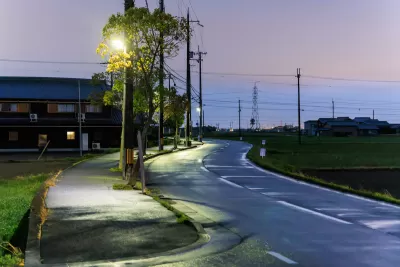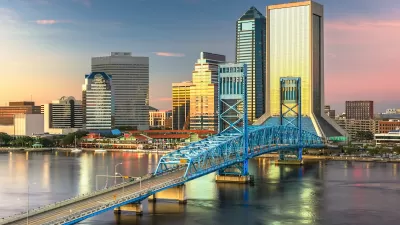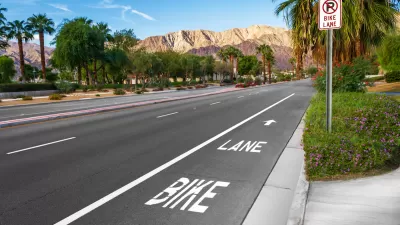With nearly half of U.S. road deaths occurring on rural roads, the Complete Streets approach offers a safer way forward, but few towns are taking it on.

In a piece in Smart Growth America, Abigail Araya reminds readers that Complete Streets and pedestrian infrastructure are not exclusively urban needs.
Araya quotes a recent SGA report that makes the case for a Complete Streets approach to rural roads as one way to reduce road deaths and build thriving, multimodal rural communities. According to the report, “as rural areas account for 49% of all traffic deaths (while only 19% of the population lives in these areas), decision makers must prioritize pedestrian design that put safety at the forefront.”
The report points out that of the 18 projects that received federal Rural Transportation Surface Grants for 2023–2024, just two included a Complete Streets approach. “However, while some pedestrian design features were tacked on to these projects, they ultimately follow the default approach to road design, prioritizing vehicle speed and throughput over the safety of other road users.”
The report concludes that a few piecemeal design components aimed at pedestrians and cyclists are not enough to end road deaths and create truly multimodal systems. “Following a Complete Streets approach means prioritizing the safety of all road users and designing for safety over speed.”
FULL STORY: What it means to follow a Complete Streets approach in rural America

Planetizen Federal Action Tracker
A weekly monitor of how Trump’s orders and actions are impacting planners and planning in America.

San Francisco's School District Spent $105M To Build Affordable Housing for Teachers — And That's Just the Beginning
SFUSD joins a growing list of school districts using their land holdings to address housing affordability challenges faced by their own employees.

The Tiny, Adorable $7,000 Car Turning Japan Onto EVs
The single seat Mibot charges from a regular plug as quickly as an iPad, and is about half the price of an average EV.

Seattle's Plan for Adopting Driverless Cars
Equity, safety, accessibility and affordability are front of mind as the city prepares for robotaxis and other autonomous vehicles.

As Trump Phases Out FEMA, Is It Time to Flee the Floodplains?
With less federal funding available for disaster relief efforts, the need to relocate at-risk communities is more urgent than ever.

With Protected Lanes, 460% More People Commute by Bike
For those needing more ammo, more data proving what we already knew is here.
Urban Design for Planners 1: Software Tools
This six-course series explores essential urban design concepts using open source software and equips planners with the tools they need to participate fully in the urban design process.
Planning for Universal Design
Learn the tools for implementing Universal Design in planning regulations.
Smith Gee Studio
City of Charlotte
City of Camden Redevelopment Agency
City of Astoria
Transportation Research & Education Center (TREC) at Portland State University
US High Speed Rail Association
City of Camden Redevelopment Agency
Municipality of Princeton (NJ)





























